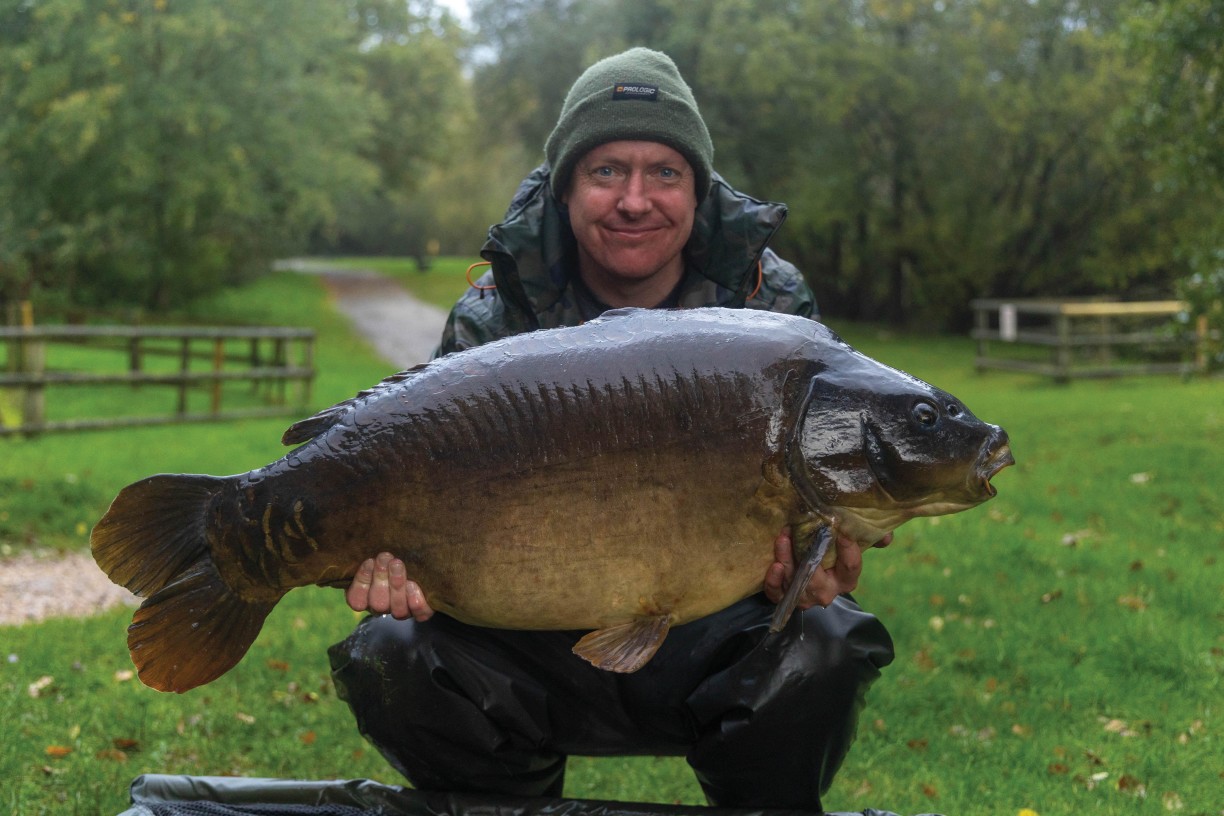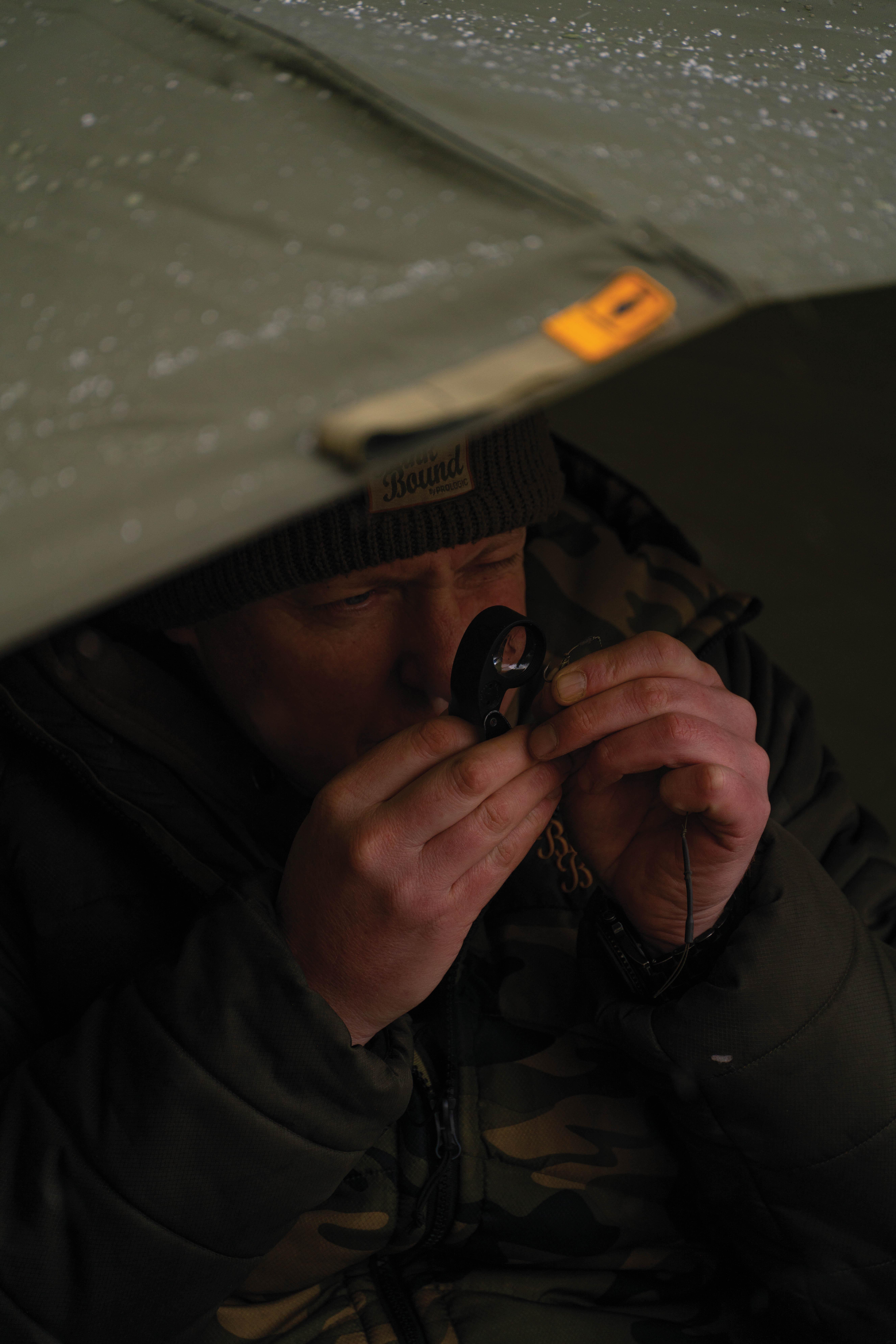Rigs According To Ed Betteridge
Close observation and underwater filming has taught Ed a lot about rigs. Here, he shares a few experiences and offers his thoughts on the subject

Do you think we now focus too much on the mechanics of a rig, and have forgotten the importance of stealth? Surely, a carp that doesn’t sense fear will be easier to hook…
“Rig mechanics are vitally important, but it is possible to tie an effective rig that also blends in. I came to appreciate that on Linch Hill’s Stoneacres. At the time, we could use boats to find spots and bait up, but we had to cast our rigs, rather than place them. I spent a lot of time looking at my set-ups through a clear-bottom bucket. First, I’d look for the main line and the leadcore. Then I’d check the lead and the rest of the rig. After seeing what I had, I switched a from a braided main line to a clear, fine mono, and a fluorocarbon leader. I also changed to colour-matched leads when fishing over gravel (they sink into silt), and fluorocarbon hooklengths. In the end, only my hookbait would be clearly visible. I was then happy that I was fishing effectively and presenting well. As a result, my catch-rate accelerated.”
Do you remember the first time you caught a carp by doing something new, that you’d not seen before?
“In 2005 on Elstow, I wrapped my hook in some green feathers from an old fly-tying kit, because I’d noticed that it would glint in the sunlight—this was before the advent of coated hooks, obviously. Once wet, the feathers looked like weed. Whilst they hid the hook, they were soft enough for the point to protrude from them. The first fish I caught after doing so was my target fish, the Mother, at 47lb. It was a colossal carp in those days. It’s funny, though, as I’ve not tried it in the 18 years since, for whatever reason.”
Do you have a particular rig that stands out from the rest, one that increased your catch-rate significantly from the moment you used it, perhaps?
“Yes, it’s a variation of the Hinge Stiff Rig, and I use it everywhere. I first tried it in 2008, after I’d watched an upper-forty linear spit out my previous rig three times! I looked at various rigs, and the one that stood out was the Hinge Stiff, but at the time, I didn’t like how high it was fished. I shortened the hook section from the three-inches, which most anglers were using, to a very curved section of under an inch. The rig has caught me loads of fish, and these days, the shortened set-up has become so popular that I rarely see the high-pop-up version.”
When it comes to fishing in silt, what is your preferred hookbait—pop-up, wafter, one straight out of the bait or a weighted bottom bait?
“Low-lying pop-up on a long rig.”

How reluctant, or perhaps keen are you, to tweak your rigs? What indicators tell you that it’s time to change something… how do you know?
“As long as a rig retains good mechanics, I’m happy to play around with the details. I’ll change only if I think I should be catching more fish. That might be because of a gut instinct, or if I see someone getting better results than me on a consistent basis.”
When does lead shape and size become important? What factors dictate a change?
“It depends on the conditions. Hard bottom equals big lead; deep silt equals light, flat lead; fishing on a slope equals light, flat-sided lead (a lot of anglers would go heavy, but I think that works against us); long-distance equals big, aerodynamic lead; and casting to showing fish equals light, Arlesey-type lead, for minimal disturbance.”
After checking the straightness of your rig in the morning, you’ll have a good idea of whether it’s been sitting sweetly during the night or not. Can you offer anything similar regarding that last six feet?
“The last time I did an underwater feature with CARPology, we had some interesting results. The rig had been out only an hour before Rob Hughes donned his diving gear and swam out to the spot. As Rob disappeared below the surface, England kicked off against Iceland in the World Cup—I’m so glad I decided to go fishing and watch the game on my phone, rather than do so down the pub! When Rob returned, he showed me photos of my rigs. The middle one had somehow doubled back behind a reed stem, and the more I looked at the image, the more I realised that it just couldn’t have happened on the cast. I had already been done, and I would have continued to fish on through the night with a less-than-effective rig, had Rob not been out.”
Do you believe fining down in winter (with smaller hooks, lighter hooklinks, etc.) makes any difference, or is it merely folklore?
“I refine my baits and my baiting, so I opt for smaller hooks for a better balance. Sometimes this calls for finer diameters with hooklink materials, but I wouldn’t fine down just for the sake of it. Shorter hooklinks can be an advantage, however, because the fish don’t move around as much, and they do so much more slowly.”



